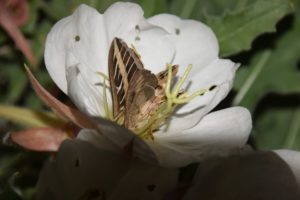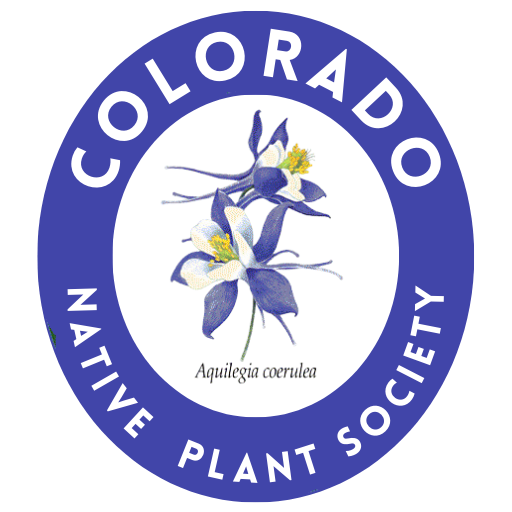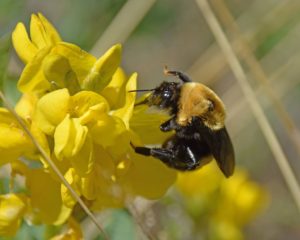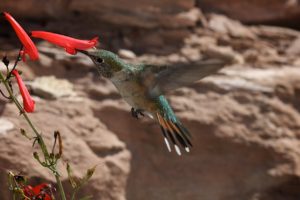Providing foraging habitat for native pollinators with diverse needs!
Depending on where you live in Colorado, in March we are approaching the time to plant natives for our local pollinators who have very diverse needs. We could write a book on this topic, but we will start with some basics.
Native bees, butterflies, moths, flies, and many more, come in all sizes (including the length of their tongues), what colors they see, and how they acquire pollen. Flowers and insects have coevolved to match all of this diversity.
For example, some native plants in the Pea Family (Fabaceae), need “heavy,” (a relative term) bumblebees for successful pollination to occur. Golden banner flowers are composed of a keel, wings, and a banner. The stamens are found as you gently pull the keel down, and only heavier bumblebees weigh enough to lower the keel and get to the pollen.

It takes a long-tongued moth to dive down deep enough to reach pollen in the evening primrose. ©Carol English
Evening primrose flowers offer nectar deep inside the style, which is sometimes as long as 4-5 cm long. This requires moths with very long tongues to access the nectar, and the pollen inadvertently drops onto the body of the moth, in the perfect place on the body so that when the moth enters the next flower the pollen will drop onto the stigma of that next flower
Flowers in the mint family (Lamiaceae), position the stamens that contain the pollen to slap the insect on the upperside of the bee as it enters the flower (this is called nototribic). In the Pea family (Fabaceae), the stamens are positioned so the pollen slaps the underside or sternum of the bee (this is called sternotribic). You can watch native bees as they enter either pea or mint flowers and observe where the pollen is landing on the pollinator. It is fun, I recommend it.
Finally, adding red penstemon to your garden such as Penstemon barbatus is essential for hummingbirds! Penstemon barbatus has co-evolved with hummingbirds. The pollen is positioned in the red penstemon to slap the hummingbird on the top of the head, so when it enters the next flower on a different plant, the stigma in that flower gets a nice dose of pollen for effective pollination.
The point of all this is in order to have great foraging habitat for all the diverse pollinators, we need to provide a diverse selection of native plants that bloom throughout the spring, summer, and fall
-
Provide a succession of native flowers throughout the season.
-
Provide a diverse selection of native flowers.
Carol English
Native Plant Master


